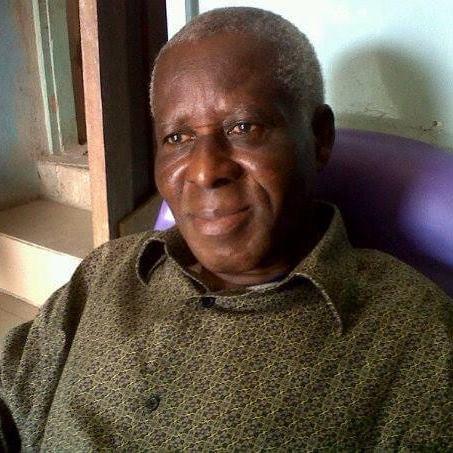By Femi OGUNLANA & Jeremiah OYELEKE
The annual Oro festival in Ogbomoso, Oyo state, has entered the seventh day having started on Friday, June 11, 2021. The event, which holds every year in the month of June, lasts seven days. However, this often is followed by another outing on the 17th day from start day and is often called “Itadogun.”

According to him, Oro and Egungun sprang from poverty. He explained there used to be two brothers who in search of making ends meet left their hometown for another town. But the best of their efforts did not yield the desired end; they rather wallowed in excruciating poverty and misery. After several attempts without success they decided to return to their old town. But there was a lacuna; they wouldn’t want the people to see their wretchedness and poverty stricken visage especially women. So, they made a furtive entry into the town, approached some elders to plan a grand entrance. They were in tattered clothes.
On the night they returned, one was attired like Egungun decked in rags and the other in apparels that later transformed into Oro. They made their appearances at night with the women being told that their dead forebears were the ones returning to earth to visit them to offer prayers and deliver sacred messages and that women are forbidden from seeing them. They couldn’t stand the women beholding their unsightly sight.
Their clandestine return was successful and they became heroes and deities from then giving rise to what is today known as Egungun and Oro. But this is what gave birth to the popular saying, “Ise l’obi Egungun, iya l’obi Oro” (Poverty birthed masquerade, misery is it that gave birth to Oro). That’s the background of why women must not behold Oro, according to the former Omo Awo. There is an Egungun, Oloolu, in Ibadan, which women are also forbidden from seeing till this day.
In that way, Egungun and Oro deities were born and festivals instituted to venerate them across Yorubaland.
Oro is a deity of peace – Onijeru, Oro custodian
ogbomosoinsightonline.com further spoke with the custodian of Oro deity in Ogbomosoland, the Onijeru of Ijeru, Oba (Dr) Elijah Olaniyi Popoola, who revealed that Oro is a deity that offers prayer for the town and people.
“Oro is a tradition we inherited from our fathers. It is a deity that must not be beheld by any woman. Those who dared it regretted it, they caused crying in their families. Oro is a deity that protects the town.
“It wards off untimely death, poverty, misery, calamities and all undesirable occurrences. My forebears brought it to Ogbomoso and so, we are its custodian – Onijeru family is Oro custodian in the whole of Ogbomosoland.”
He was asked of the preparations often made prior the commencement of the festival to which he responded: “Number one, we make public announcement so as to let the people know because there are night crawlers especially women.
“Then, we will begin the necessary rituals which are aimed at fostering harmony, peace and progress in the community.”
He submitted that he did not know why women must not see Oro. Hear him: “It results in death. Only the deity knows the reason. It doesn’t explain the reason to us. It only says it must not be beheld by women.”
Onijeru also explains the import of “Itadogun”: “Itadogun is the day Oro will depart the earth and return to where it came from. During the preparation for the festival, it will be busy praying for the progress of the town, for safe delivery, procreation, and so on. On the 17th day, when it is departing it will take all the sacrifices were offered along to heaven. So, ojo ketadinlogun (17th day) is what is called Itadogun (Eta-dinlogun) from the day the Oro started.
“On this day, it will depart with all the foods offered it. Do you know the food of Oro? These include iyan to bu (mouldy pounded yam), asaro to bu (mouldy porridge), amala to bu (mouldy yam flour), these foods will be reserved till it is departing and it will go with them.”
On Rev’d Ige’s campaign to restrict Oro to night time, Oba Popoola stated, “I knew Reverend Ige before he died, the year he said he wanted to liberate the women from the restriction of Oro, many regretted it because it led to the death of many women.”
If Oro is not dared it won’t kill any woman, “It rather evacuates untimely death, epidemic and all bad things.”

Oro festival, one of the traditional festivals in Yorubaland, is one that comes with dread in view of the prohibition of the womenfolk from sighting Oro during the festival which often runs through the night. Any woman that defies this and beholds Oro as it parades the streets amidst its adherents meets sudden death that is cruelly inflicted by instant drying off of the blood. Whether the woman willingly or unwillingly sights Oro, death is the penalty.
How many women have departed through this medium over the years one cannot state, but certainly, quite a number of casualties has been recorded.
In years past the festival was observed during the day as well, implying that women were not allowed outside during the period. But a protest led by late Reverend Aisha Ige, who was pastor at Ijeru Baptist Church for about sixty years, restricted the frightful festival with its unsavoury restriction to the night time, often starting at about 11pm and lasting till about 5pm the following morning during the seven days.
According to tradition, the “Itadogun,” the last session of the festival is even more stringent in its demand in that the male folk are as well restricted from having a view of the Oro and anyone who violates this suffers untimely, violent death. Thus, on the day the “Itadogun” is observed, both men and women that aren’t participants are expected to stay indoors while it lasted.
When does one cross the line?
There are several Oro families which all embark on nightly processions during the festival. Old and young men in the family venture out at night to parade the streets, while reciting the praise of the deity.
The procession moves from one street to another, their approach announced by penetrating whooshing sounds emanating from swirling split bamboos often undertaken by young boys. It is said that Oro makes an appearance wearing a robe with shells and adorns a white wooden mask with blood smeared on the lips. As it trudges on, its followers eulogize it by making incantations in loud voices.
A woman who runs into them advertently or inadvertently kisses the world bye under a hail of incantations that dries off her blood on the instant. Even those who thought they could be furtive are discovered and would not escape death. A past Baale (Soun) of Ogbomoso, Ologolo, crossed the line when during an Oro festival, he hid his favourite wife under his stool so the woman could have a furtive view of Oro and denude its mystery. But the Oro uncovered the mischief, and the woman did not escape fatality, her high position notwithstanding. It was followed with the removal of the Baale who connived to violate tradition.
Origin of Oro
Years back Ogbomoso Insight spoke with Evangelist Isaac Adediran Awolola Awodeji Ade Omo Jesu, who was formerly a powerful traditionalist popularly known as Omo Awo, and who owned a dreaded masquerade (Egungun) – Eegun Omo Awo in Ogbomoso, though from Ila-Orangun. He revealed the origin of Oro and Egungun.


